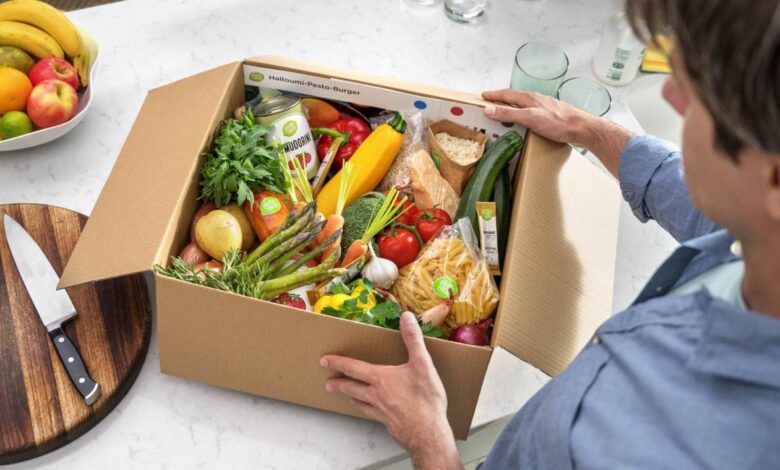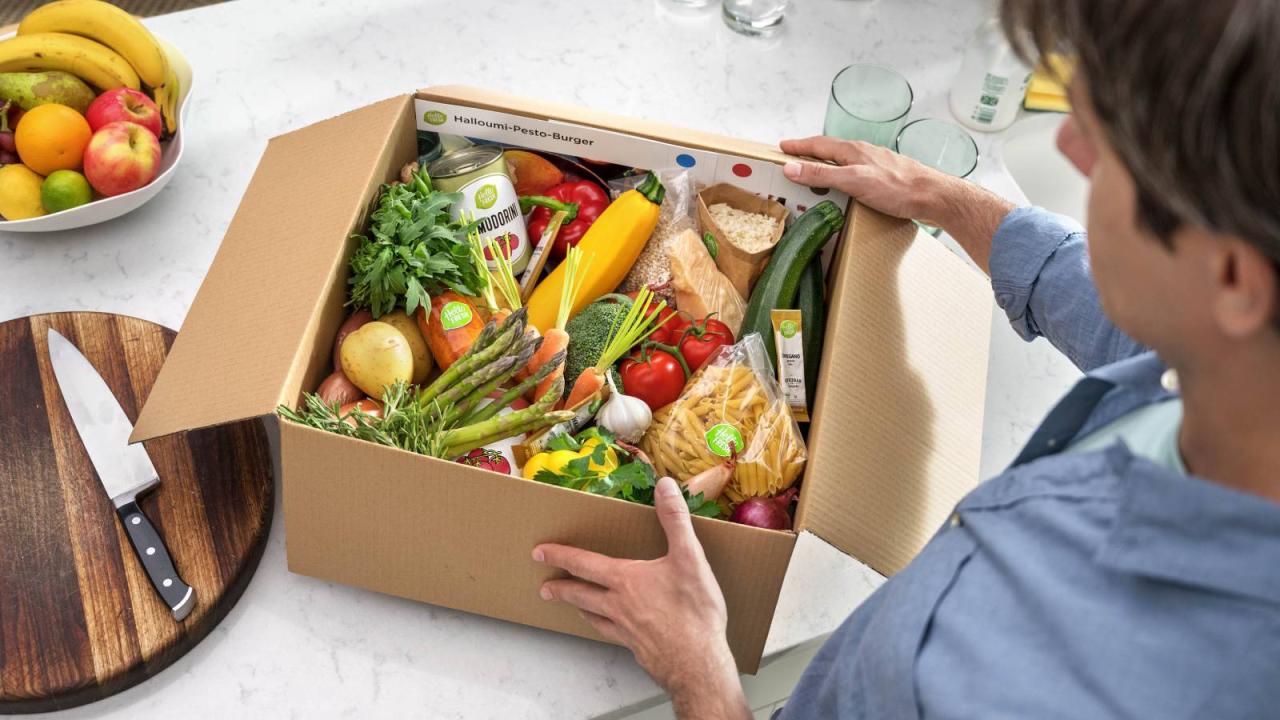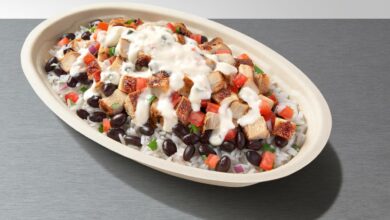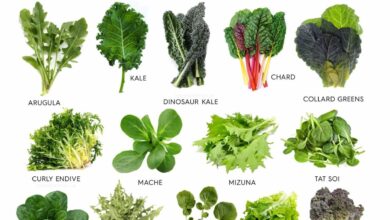
Is Online Food Shopping Good for You?
Is online food shopping good for you? The answer, like most things in life, is a bit more nuanced than a simple yes or no. While it offers undeniable convenience and a vast selection of products, there are also considerations around cost, environmental impact, and even potential health implications.
Join me as we explore the pros and cons of this increasingly popular way to fill our fridges.
From saving precious time to discovering new culinary delights, online grocery shopping has become a staple for many. But is it truly the best option for everyone? Let’s delve into the details and weigh the benefits against the drawbacks to determine if online food shopping is truly good for you.
Environmental Impact

The environmental impact of online food shopping is a complex issue with both positive and negative aspects. While it offers convenience and potential benefits, it also raises concerns about increased packaging waste and transportation emissions.
Packaging Waste
The increased use of packaging in online food shopping is a significant concern. Many online grocery platforms rely heavily on single-use plastic bags, boxes, and containers to protect and transport food items. This leads to a substantial amount of packaging waste that often ends up in landfills, contributing to environmental pollution and resource depletion.
Online food shopping can be a great way to save time and energy, but it can also make it harder to choose healthy options. If you’re looking for a way to boost your gut health, consider adding fermented foods like miso to your diet.
Miso is a traditional Japanese fermented soybean paste that’s packed with probiotics, which are beneficial bacteria that can help improve digestion and overall gut health. Learn more about the miso gut health benefits and see if it’s a good fit for your online grocery shopping list! With a little planning, you can make sure your online food shopping is both convenient and good for your gut.
Transportation Emissions
Delivering groceries to individual customers requires multiple trips, often using vehicles that contribute to air and noise pollution. The transportation sector is a major source of greenhouse gas emissions, and online food shopping can exacerbate this problem.
Online food shopping is a convenient way to get groceries, but it can be tough to make healthy choices when faced with endless aisles of tempting treats. It’s also tempting to stock up on “superfoods” that promise to boost your health, but are they really worth the hype?
This article explores the truth about superfoods and whether they live up to the hype. Ultimately, the best way to eat healthy is to focus on a balanced diet with plenty of fruits, vegetables, and whole grains, regardless of whether you shop online or in-store.
Potential Benefits of Online Food Shopping
Despite the challenges, online food shopping can also contribute to environmental sustainability in several ways:
Reducing Food Waste
Online grocery platforms often offer smaller quantities of produce and other perishable items, allowing customers to buy only what they need and reducing food waste. By making it easier for consumers to access fresh produce, online shopping can also encourage healthier eating habits and reduce the overall amount of food that ends up in landfills.
Online food shopping can be a time-saver, but it’s important to be mindful of your choices. It’s easy to get carried away with impulse buys, so I always try to stick to a list. And when I need inspiration, I turn to the experts – like the dietitians featured in the dietitians eat vacation blog.
Their insights on healthy eating while on vacation have helped me make healthier choices when I’m online shopping, ensuring I’m getting the nutrients I need without falling into unhealthy habits.
Supporting Local Producers
Many online grocery platforms partner with local farmers and food producers, providing them with a platform to sell their products directly to consumers. This can help to reduce the need for long-distance transportation, promoting sustainable agriculture and supporting local economies.
Sustainable Practices in Online Food Shopping
Several online grocery platforms are actively working to reduce their environmental impact. These platforms implement various initiatives, including:
Using Reusable Packaging
Some online grocery platforms offer customers the option to use reusable containers for their deliveries. This reduces the amount of single-use packaging and promotes a circular economy model.
Reducing Packaging Waste
Platforms are exploring innovative packaging solutions, such as biodegradable and compostable materials, to minimize the environmental impact of packaging waste.
Optimizing Delivery Routes
Platforms are using technology to optimize delivery routes, reducing the number of trips and minimizing fuel consumption.
Promoting Sustainable Products
Platforms are offering a wider selection of sustainable products, such as organic produce, locally sourced goods, and products with reduced packaging.
Security and Privacy: Is Online Food Shopping Good For You
Online food shopping offers convenience and efficiency, but it also raises concerns about security and privacy. As with any online transaction, protecting your personal information and financial details is crucial when using these platforms.
Security Measures Implemented by Online Food Shopping Platforms
Online food shopping platforms implement various security measures to safeguard customer data and financial information. These measures are designed to protect against unauthorized access, data breaches, and fraudulent activities.
- Encryption:Platforms use encryption technology to secure data transmitted between the customer’s device and the platform’s servers. This ensures that sensitive information, such as credit card details and personal information, is unreadable to unauthorized parties.
- Secure Sockets Layer (SSL):Most online food shopping platforms use SSL certificates to establish a secure connection between the customer’s browser and the platform’s website. This is indicated by a padlock icon in the browser’s address bar and the website address starting with “https”.
- Two-factor Authentication (2FA):Many platforms offer 2FA as an additional security layer. This requires users to provide a unique code, typically sent to their mobile device, in addition to their password when logging in. This makes it more difficult for unauthorized individuals to access accounts even if they have a password.
- Data Security Standards:Platforms adhere to industry-standard security protocols, such as Payment Card Industry Data Security Standard (PCI DSS) and General Data Protection Regulation (GDPR), to ensure the secure handling of sensitive data.
Potential Risks Associated with Online Shopping, Is online food shopping good for you
Despite the security measures implemented, online shopping platforms are not immune to potential risks.
- Data Breaches:While platforms strive to protect customer data, data breaches can still occur due to vulnerabilities in their systems or malicious attacks. In the event of a data breach, sensitive information, such as customer names, addresses, and payment details, could be compromised.
- Fraudulent Activities:Online shopping platforms can be targets for fraudulent activities, such as account takeovers, unauthorized transactions, and phishing scams. Criminals may attempt to gain access to customer accounts to steal personal information or make unauthorized purchases.
Tips for Customers to Enhance Online Shopping Security and Privacy
Customers can take proactive steps to enhance their online shopping security and privacy:
- Use Strong Passwords:Create strong and unique passwords for each online account, including online food shopping platforms. A strong password should be at least 12 characters long, combining uppercase and lowercase letters, numbers, and symbols.
- Enable Two-Factor Authentication:If offered, enable 2FA for your online food shopping account. This adds an extra layer of security and makes it significantly harder for unauthorized individuals to access your account.
- Be Cautious of Phishing Attempts:Be wary of suspicious emails or messages claiming to be from your online food shopping platform. Do not click on links or provide personal information if you suspect the message is fraudulent. Always verify the sender’s identity and check for any spelling errors or inconsistencies.
- Monitor Your Account Activity:Regularly review your account activity and look for any suspicious transactions. Report any unauthorized activity to the platform immediately.
- Keep Your Software Up-to-Date:Ensure that your computer and mobile device have the latest security updates installed. This helps protect against known vulnerabilities that could be exploited by hackers.
- Use a Secure Wi-Fi Network:Avoid using public Wi-Fi networks when accessing your online food shopping account. Public Wi-Fi networks are more vulnerable to hacking and eavesdropping.
- Be Mindful of Data Sharing:Be aware of the data you are sharing with online food shopping platforms. Read the platform’s privacy policy and understand how your information is collected, used, and shared. You can choose to limit the amount of data you share or opt out of certain data collection practices.
Final Review
Ultimately, the decision of whether or not online food shopping is right for you depends on your individual needs and priorities. While it offers convenience and a wider selection, it’s important to consider factors like cost, environmental impact, and potential health implications.
By carefully weighing these aspects, you can make an informed choice that aligns with your lifestyle and values. So, the next time you’re planning your grocery trip, take a moment to consider if online shopping might be the perfect fit for you.






